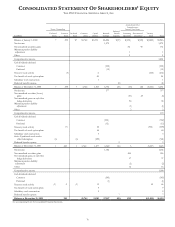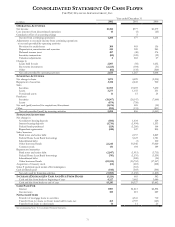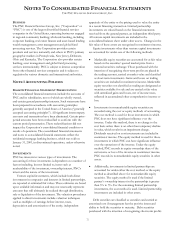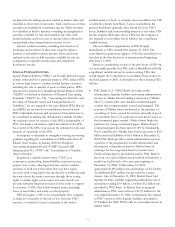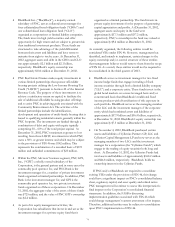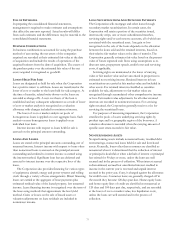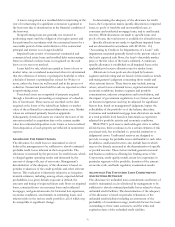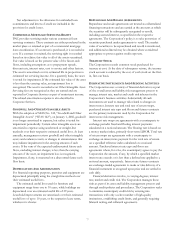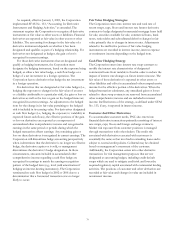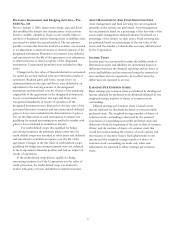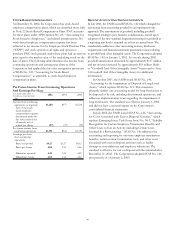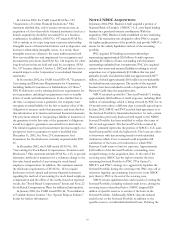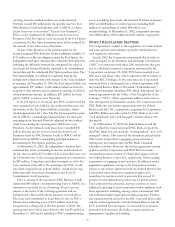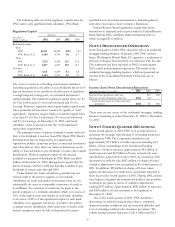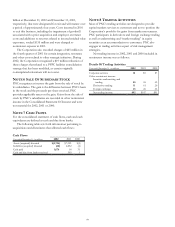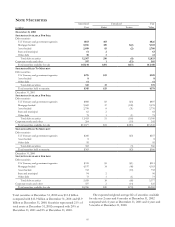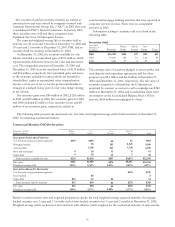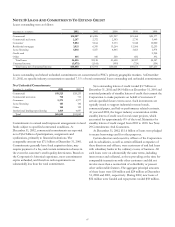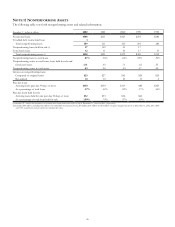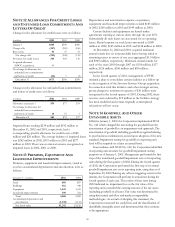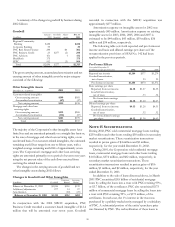PNC Bank 2002 Annual Report Download - page 82
Download and view the complete annual report
Please find page 82 of the 2002 PNC Bank annual report below. You can navigate through the pages in the report by either clicking on the pages listed below, or by using the keyword search tool below to find specific information within the annual report.
80
STOCK-BASED COMPENSATION
At December 31, 2002, the Corporation has stock-based
employee compensation plans, which are described more fully
in Note 22 Stock-Based Compensation Plans. PNC accounts
for these plans under APB Opinion No. 25, “Accounting for
Stock Issued to Employees,” and related interpretations. No
stock-based employee compensation expense has been
reflected in net income for the Employee Stock Purchase Plan
(“ESPP”) and stock options as all rights and options to
purchase PNC stock granted under these plans had an exercise
price equal to the market value of the underlying stock on the
date of grant. The following table illustrates the income from
continuing operations and earnings per share as if the
Corporation had applied the fair value recognition provisions
of SFAS No. 123, “Accounting for Stock-Based
Compensation,” as amended, to stock-based employee
compensation plans.
Pro Forma Income From Continuing Operations
And Earnings Per Share
Year Ended December 31
In millions, except per share
data
2002 2001 2000
Income from continuing
operations, as reported $1,200 $377 $1,214
Less: Total stock-
based employee
compensation expense
determined under the
fair value method for
all awards, net of
related tax effects (47) (33) (18)
Pro forma income from
continuing operations $1,153 $344 $1,196
Earnings per share
from continuing
operations
Basic-as reported $4.23 $1.27 $4.12
Basic-pro forma 4.06 1.15 4.06
Diluted-as reported 4.20 1.26 4.09
Diluted-pro forma 4.04 1.14 4.02
RECENT ACCOUNTING PRONOUNCEMENTS
In July 2001, the FASB issued SFAS No. 142 which changed the
accounting from amortizing goodwill to an impairment-only
approach. The amortization of goodwill, including goodwill
recognized relating to past business combinations, ceased upon
adoption of the new standard. Impairment testing for goodwill at
a reporting unit level is required on at least an annual basis. The
standard also addresses other accounting matters, disclosure
requirements and financial statement presentation issues relating
to goodwill and other intangible assets. The Corporation adopted
SFAS No. 142 on January 1, 2002. As a result, during 2002
goodwill amortization decreased by approximately $117 million
and net income increased by approximately $93 million. Refer
to "Goodwill And Other Intangible Assets" herein and to Note
14 Goodwill And Other Intangible Assets for additional
information.
In October 2001, the FASB issued SFAS No. 144,
“Accounting for the Impairment or Disposal of Long-Lived
Assets,” which replaces SFAS No. 121. This statement
primarily defines one accounting model for long-lived assets to
be disposed of by sale, including discontinued operations, and
addresses implementation issues regarding the impairment of
long-lived assets. The standard was effective January 1, 2002
and did not have a material impact on the Corporation’s
consolidated financial statements.
In July 2002, the FASB issued SFAS No. 146, “Accounting
for Costs Associated with Exit or Disposal Activities,” which
replaces Emerging Issues Task Force Issue No. 94-3, “Liability
Recognition for Certain Employee Termination Benefits and
Other Costs to Exit an Activity (including Certain Costs
Incurred in a Restructuring).” SFAS No. 146 addresses the
accounting and reporting for one-time employee termination
benefits, certain contract termination costs, and other costs
associated with exit or disposal activities such as facility
closings or consolidations and employee relocations. The
standard is effective for exit or disposal activities initiated after
December 31, 2002. The Corporation adopted SFAS No. 146
prospectively as of January 1, 2003.


